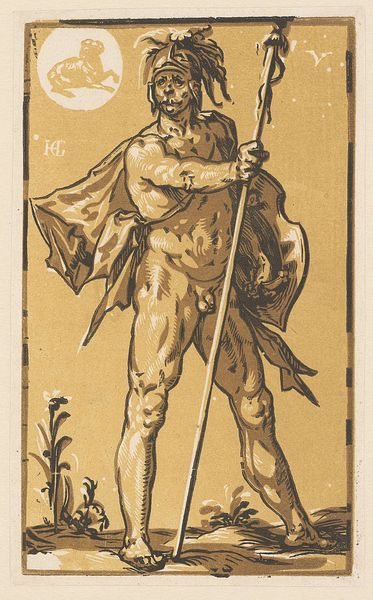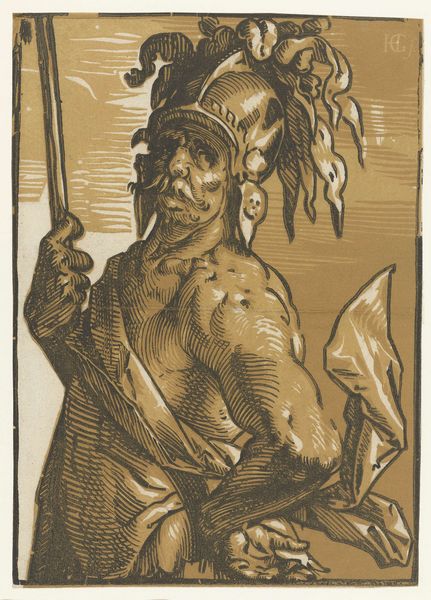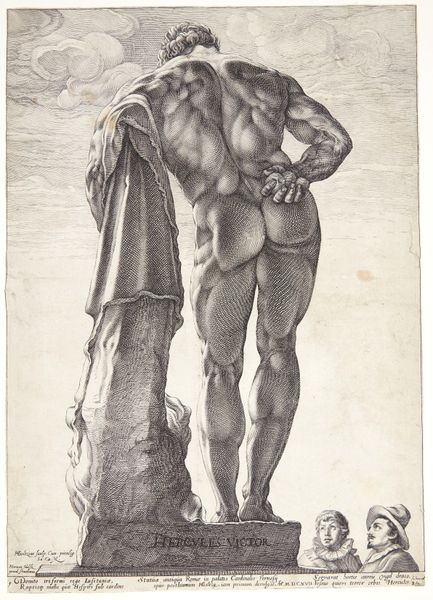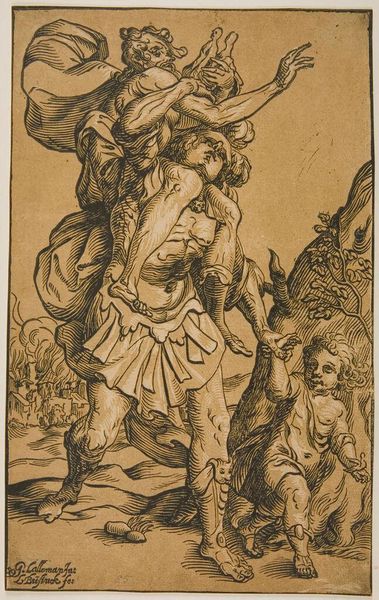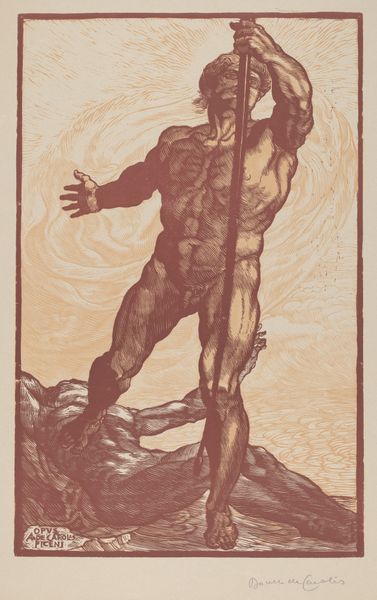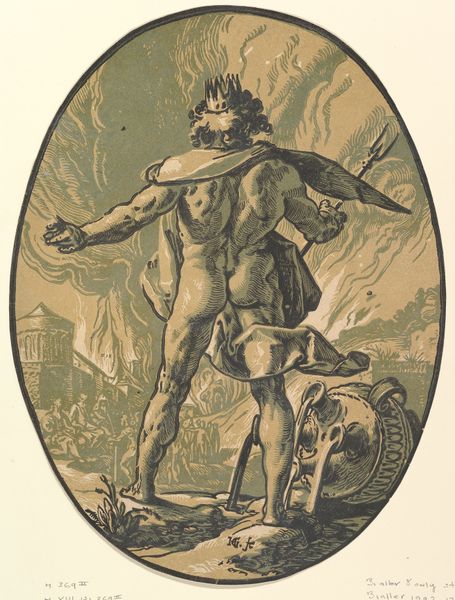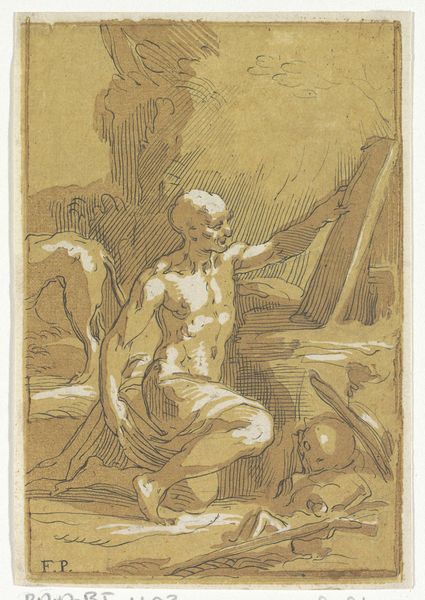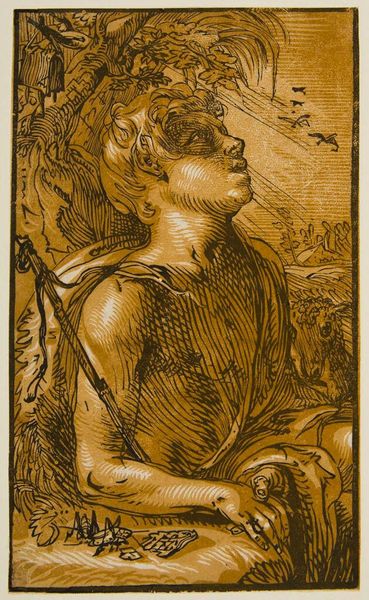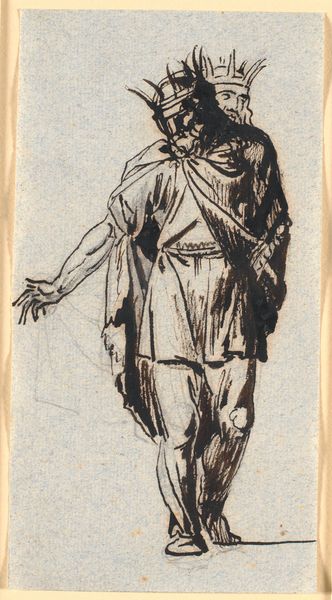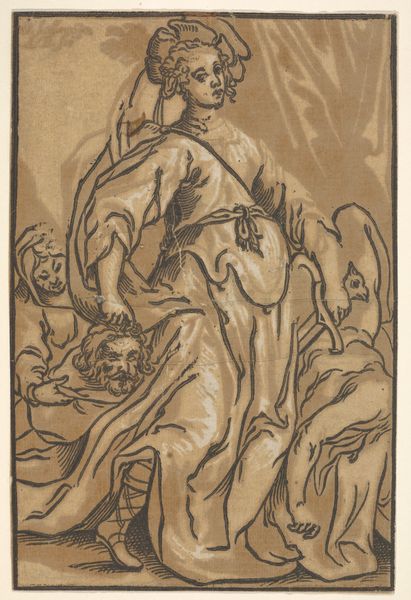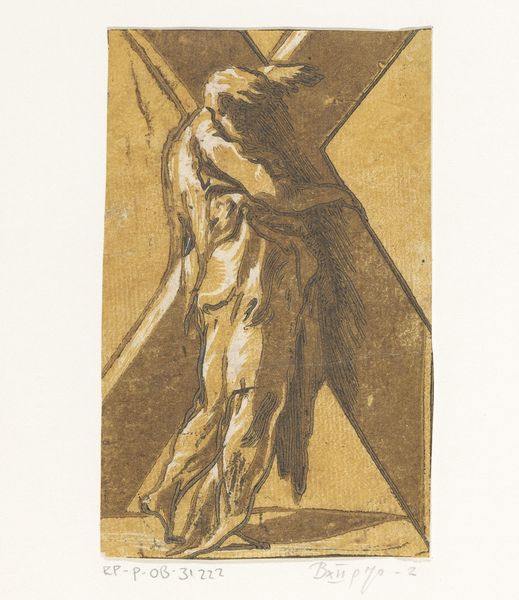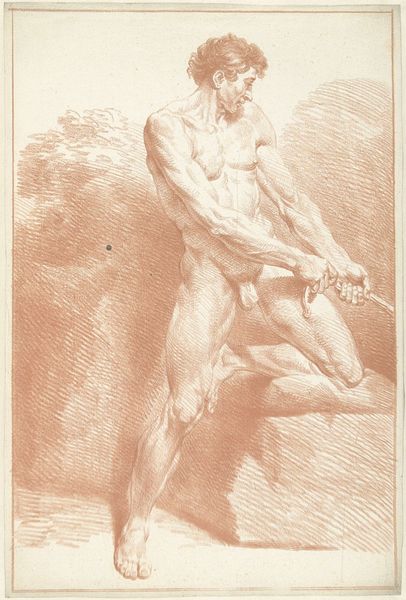
print, metal, engraving
# print
#
metal
#
caricature
#
mannerism
#
figuration
#
mythology
#
line
#
history-painting
#
nude
#
engraving
Copyright: Public domain
Curator: This image is "Mars," an engraving rendered circa 1590 by Hendrick Goltzius. I'm immediately struck by the striking linear work, and the commanding, yet slightly off-kilter, composition. It feels weighty, like a powerful but uneasy force. Editor: Uneasy is a good word. Look at his stance; there is a certain tension, like he’s about to unleash. Goltzius, working in the Mannerist style, was keenly aware of the sociopolitical atmosphere and often used classical imagery to subtly critique power structures of the time. Curator: The metal medium lends itself to reproducing images on a grand scale; do you think its availability shaped public access and engagement with such mythological subjects, then? Editor: Absolutely. Printmaking democratized art. Mythological figures like Mars weren't confined to the walls of aristocratic homes. These images entered the public sphere, impacting popular imagination. What I find interesting, in our contemporary moment, is the representation of Mars here – nearly nude. How can we see this in relation to today’s masculinity studies? Curator: The stark nudity, typical of classical representations, contrasts sharply with modern notions of martial power and hyper-masculinity. This almost vulnerable portrayal encourages a re-evaluation, a deconstruction perhaps, of traditionally enforced archetypes that serve current patriarchal structures. Editor: Exactly! And the small symbol of Aries in the upper corner; tying this violent figure back to the more passive symbol of the lamb—what social commentaries were taking place through popular forms of visual art in the late 16th century? What about wars of religion, the centralization of power…? Curator: Those wars deeply influenced Goltzius's production. His choice of imagery and dramatic style reflects, critiques, and responds to a period rife with upheaval. Art offered commentary, or a lens through which the public digested societal transformation. It humanizes the 'God of War' through imperfection and thus presents power as equally vulnerable. Editor: Considering our era, bombarded with images of conflict, examining the visual language surrounding warfare – even from centuries past – provides a critical historical understanding. Curator: Agreed. Examining and deconstructing even iconic symbols helps us see not only their intended meanings, but the power dynamics they perpetuate, whether consciously or unconsciously. It creates awareness of a historical dialogue— still relevant today.
Comments
No comments
Be the first to comment and join the conversation on the ultimate creative platform.
